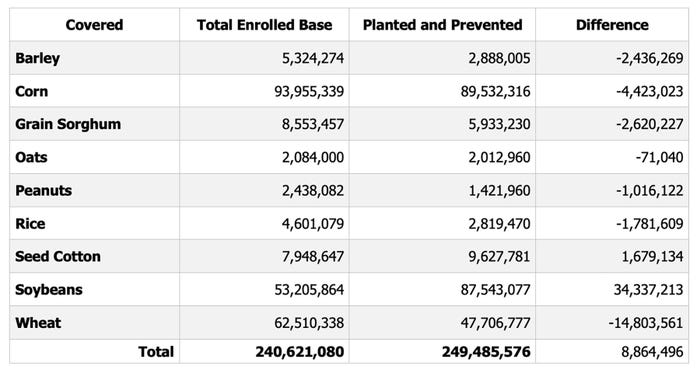
Published reports indicate renewed interest by some in Washington, D.C., in tying commodity program payments to planted acres rather than base acres.
Since the mid-1980s, commodity programs in the U.S. have used base acres of each program crop on a farm to determine a producers’ payment for each crop, with two notable exceptions: (1) the period covered by the 1996 Farm Bill (1996 to 2001) and (2) the Average Crop Revenue Election (ACRE) program in the 2008 Farm Bill which paid on planted acres (not to exceed total base acres on the farm).
The primary argument for using base acres rather than planted acres centers around the desire to not have potential commodity program benefits unduly influence program commodity plantings.
On the other hand, using planted acres as the basis for payments would allow producers to more effectively manage their risk, as potential payments would be based on the crop they are actually planting.
Topic of discussion
So, why is paying on planted acres a topic of discussion in Washington, D.C.?
There are producers that plant more acres than they have base all over the United States. These producers and their associations are lobbying Congress to allow them to add base either through a forced base update or alternatively, by basing payments on planted acres, which effectively is the same thing.
Either way you look at it, there will be a cost as additional acres are added. Looking at 2022 FSA enrolled base acres and 2022 planted and prevented planted acres reported to FSA shows a difference of about 9 million acres. Most of the commodities in the table would have lower bases in the future while soybeans and seed cotton would add acres.
The House version of the 2014 Farm Bill included what some would call a compromise option (similar to payment acres in ACRE in the 2008 Farm Bill) where commodity payments would have been paid on planted acres not to exceed their current base acres.
While it was not included in the final bill, this would seem to solve some of the risk management concerns but would still leave producers with more planted acres than base wanting more.
FSA Total Enrolled Base Acres and Planted and Prevented Planted Acres Reported to FSA in 2022.

Source: USDA
Source: Southern Ag Today
About the Author(s)
You May Also Like




